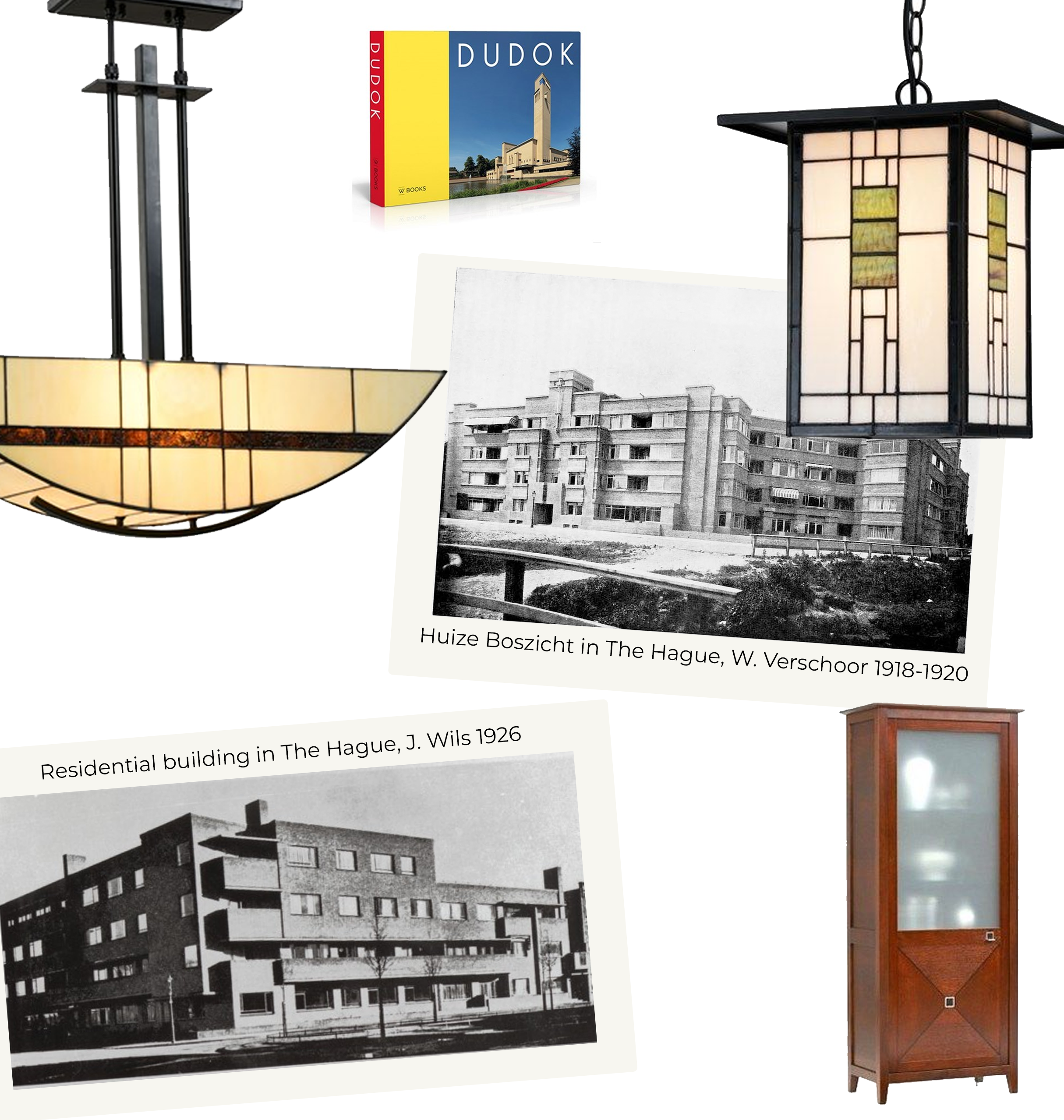17 June 2019 9:40
The sturdy and expressive building and interior style of the New Hague School could first be seen in The Hague's cityscape just over a century ago. In 2019, the style is still relevant and well represented at Art Deco Webstore. But how did the style come to be?
A new form of living
A bit of history: in 1920, the term "Nieuwe Haagse School" was first mentioned by the architect C.J. Blaauw. And not in a positive way, incidentally. Blaauw, himself an architect of the Amsterdam School, thought nothing of the latest developments in modern architecture. "Typical of The Hague" - that was how the designer of the Schip van Blaauw (Blaauw's ship), the former laboratory for plant physiology of the Higher Agricultural education in Wageningen, spoke of the style. But, fortunately, not everyone saw it that way. Around 1920, a form of living reminiscent of American residential hotels was developed by the likes of the architects Jan Wils and W. Verschoor. This appealed to wealthy inhabitants of The Hague who were looking for more modern apartments. The style blossomed between 1925 and 1940 and brought uniformity to the cityscape.
Overhanging roofs and cubist shapes
A lot of symmetry can be seen in the New Hague School. Overhanging roofs, angular and cubist forms, and the use of bay windows, chimneys, awnings, and terraces stand out. Anyone who thinks "that sounds familiar" has a point. The Hague style draws a great deal of influence from Berlage's rationalism, the arts and crafts movement, and De Stijl. The New Hague School is more luxurious than the style of the Amsterdam School but makes use of strict and clean lines. The world-famous architect Frank Lloyd Wright had a big influence on the style. Because of his designs and glass art, but also because of his influence on important New Hague Style architects such as Co Brandes, W.M. Dudok, Jan Wils, and Hendrik Wouda.
Hague School at Art Deco Webstore
From area rugs to twinkling and geometric pendant lamps in a Frank Lloyd Wright style: the New Hague School is also particularly well suited for interior design. The clean lines and symmetrical shapes give any style of living a bold Art Deco touch. Take a look, for example, at the distinctive Hague School floor lamp, Furniture Fabric Stripe, and the Art Deco cubic display cabinet.
Want to read more about the New Hague School? With its beautifully colorful pages, the book W.M. Dudok gives you a special sense of the era and showcases the works of the architect of the town hall in Hilversum.
From left to right: Tiffany Pendant Light Geometric, Book W.M. Dudok, Tiffany Pendant Light Frank Lloyd Wright, Art Deco Display Case Cubic 1 Door.

 ordered before 12:00, shipped today
ordered before 12:00, shipped today customers review us with 4.8/5
customers review us with 4.8/5 💝 For the best Mothers
💝 For the best Mothers
 ordered before 12:00, shipped today
ordered before 12:00, shipped today customers review us with 4.8/5
customers review us with 4.8/5 💝 For the best Mothers
💝 For the best Mothers